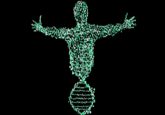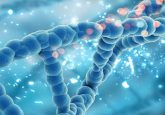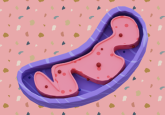Targeting obesity and the 2020 Queensland Women in STEM award with Denuja Karunakaran
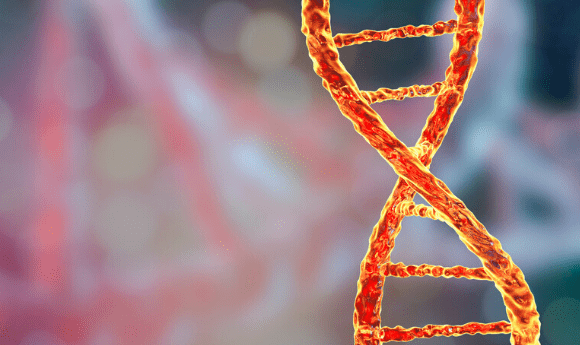
BioTechniques Editor Jenny Straiton caught up with Denuja Karunakaran to discuss her entry to the 2020 Queensland Women in STEM award, her research into the genetics of obesity and the challenges she has faced, and overcome, as a woman in STEM.
Please introduce yourself and your institution.
 My name is Denuja Karunakaran and I am an IMB Fellow at The University of Queensland Institute for Molecular Bioscience (Australia). I received my PhD in human platelet biology from Monash University (VIC, Australia) in 2008. From there, I went onto the Heart Foundational Postdoctoral Fellowship at the University of New South Wales (Australia) followed by the Endowed Cardiovascular Genetics Postdoctoral Fellowship at the University of Ottawa Heart Institute (ON, Canada).
My name is Denuja Karunakaran and I am an IMB Fellow at The University of Queensland Institute for Molecular Bioscience (Australia). I received my PhD in human platelet biology from Monash University (VIC, Australia) in 2008. From there, I went onto the Heart Foundational Postdoctoral Fellowship at the University of New South Wales (Australia) followed by the Endowed Cardiovascular Genetics Postdoctoral Fellowship at the University of Ottawa Heart Institute (ON, Canada).
Can you introduce the 2020 Queensland Women in STEM award and tell us about the research you are putting forward for it?
The Queensland Women in STEM Prize is run by the Queensland Museum Network and aims to recognize women throughout Queensland who are working in STEM careers. The research project I entered is ‘Trimming the Fat: Targeting novel genetic factors and molecules that drive obesity’. Some of the work is based on the unpublished work I did during my time as a Post Doc in Canada, where we identified several sets of novel genetic variants that are associated with an increased risk of obesity in a small cohort of the Canadian population. Interestingly, we discovered that genetic variants seem to regulate inflammation in the adipose tissue and this potentially contributes to the increased risk of obesity. Based on that work, I am currently looking at different genes, genetic markers and genetic factors that regulate adipose tissue inflammation, and how that potentially drives obesity.
Obesity is a very complex condition and fat tissue inflammation is only one part of the bigger equation. The public can sometimes have a misguided concept that you’re only overweight or obese because of lack of exercise or lifestyle choices, and whilst those factors are important, it’s not the sole driver of obesity. We really need to understand it and remove the unnecessary stigma associated with obesity. This is a huge issue worldwide and despite decades of intervention by governments, epidemiology studies and health promotion, we are not reducing rates of obesity suggesting there is definitely more to the equation.
What challenges did you face when conducting this research and how did you overcome them?
The real challenge came with knocking out the mechanism; adipose tissue is a complex tissue with multiple different cell types and it is also very heavy due to the high amount of lipid-loaded adipocytes with very few RNA molecules or proteins. The biggest challenge was actually isolating enough adipose tissue and cells of interest to allow for further investigation into the mechanism, with regards to the functionality of what is actually happening from the therapeutic knockdown of the gene of interest. The gene that we initially focused on was RIPK1 and the variants in that gene that link it to an increased risk of obesity. We were able to therapeutically knock them down in mice, which protected them against obesity and diabetes.
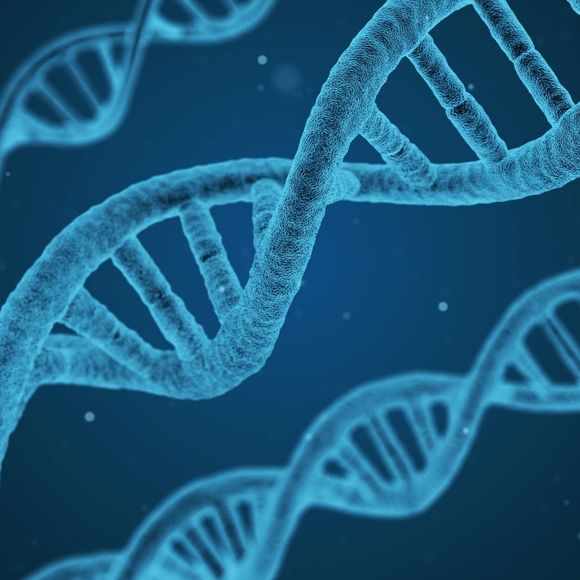 Epigenetics and metabolism: what do we know?
Epigenetics and metabolism: what do we know?
Researchers have summarized the field of metabolism-linked epigenetics, examining type 2 diabetes and obesity, detailing current understanding and questioning what is unknown.
Where do you see the therapeutic treatment of obesity going in 5-10 years’ time?
I think we already know quite a bit with regard to appetite control, the genetic variants or genes that can be associated with that and, consequentially, an increased risk of obesity. However, I think that we have just hit the tip of the iceberg; some of the information we have discovered hints towards a genetic regulation of inflammatory processes within the adipose tissue that could potentially drive obesity, at least in a small population or a small cohort of people. I believe that we are only at the very beginning of understanding what is going on and I think there is great potential there to harness these pathways, particularly in those with a certain genetic profile, to help guide lifestyle changes and other dietary measurements to reduce the burden of obesity.
However, I think we are still quite far away from a true therapeutic approach and there is still a lot we need to understand. There is great potential for us to develop targeted therapies and to potentially target inflammation, not only to treat obesity but also obesity-associated diseases, such as inflammatory diseases, diabetes and potentially cardiovascular diseases as well. We are on the right path and we’ve got some very important clues towards this but therapeutically targeting something like obesity is probably at least 10 years away.
With the genetic link you have identified, do you see the potential for gene therapies for obesity?
There is a potential for gene therapies. For example, in the in vivo mouse model that we studied, we actually treated the mice with antisense oligonucleotides. These antisense oligonucleotides have a similar backbone to those currently used in clinical trials to target other genes, such as APOE3. The particular antisense oligonucleotide that we used is not yet in clinical trials, but there is potential scope for this. However, we first need to identify the full set of genes involved that could potentially be targeted and determine whether it is better to knockdown the gene or partially silence it. More research needs to be done before we start to think about going down that gene therapy path.
There are multiple scopes to use this genetic information, but we really need to understand the full complexity of it and, as I’ve already mentioned, we are just at the tip of the iceberg for that.
Where do you stand on the use of personalized diet plans, supposedly tailored to your genetics?
From a research point of view, I don’t believe that all of these diet plans that are being promoted, especially those for reducing obesity, have been properly tested. They haven’t received the required large-scale clinical trials needed to be able to test these theories. There is certainly evidence for certain dietary lifestyles that do seem to assist with weight loss, but I think the equation is far more complex and I don’t think we know it all well enough to be definitive about what diet plans will or won’t work. We do know that diet is important, though so is exercise, sleep and a number of other factors – nothing is clean cut or simple.
BioTechniques sat down with Liesbeth Hondelink and Reidunn Jetne Edelmann, to discuss their recent work developing deep learning algorithms to improve research cancer patients.
Have you faced undue challenges as a result of attitudes towards women in STEM roles? If so, how have you addressed these challenges?
There are two key things that I want to highlight. First, there aren’t as many women in senior roles in STEM and so it’s often a challenge to identify a good mentor to help you navigate this academic career. A lack of senior women in STEM careers can make it difficult to find someone that you can relate and connect to, and actually get that valuable input from a woman’s perspective. Eventually, I did find my female role models, but I had to talk to more people and look outside of my immediate research area to gain the mentorship and guidance that I was looking for.
Secondly, though we’ve come a long way with inclusivity and acknowledging that women often perform the caring roles in their personal life, this is one thing I have struggled with. A couple of decades ago, there wasn’t the same opportunities and support available for women to take time out to care for their family as there are now. I’ve not necessarily wanted to start my own family, but as a woman there is an expectation to act as the career for your family, and caring roles are not strictly limited to children. It often falls to the women in the family to care for elderly parents or sick relatives, so caring is not necessarily limited to motherhood. This is something much less supported in the academic setting and was definitely something I found quite challenging. I did have to find a balance between managing my personal life and my career, especially since my male counterparts at the same career stage did not necessarily have the same sort of expectations or duties.
Do you have any advice for women in STEM jobs or research roles, especially for those early in their careers?
Find a good mentor. Ideally, find a panel of mentors, different people that you can approach for different aspects of advice. For example, there might be a mentor you can reach out to for personal advice, another one for career development and another one for scientific help. Make sure that you have a panel of good mentors around you from the beginning who can guide you and be role models in your career.
Second, pursue what you love – I can’t stress that enough. If you do not love your research it really becomes a challenge. When science goes haywire, as we all know it does, having a personal passion for your research allows you to cross those hurdles. I would advise making sure you follow your heart and your passion with a good support network around you, in both your work and personal life.
What do you think needs to change and how could this change come about in order to improve equality in STEM jobs?
I think one of the things is increased awareness of the different challenges faced by women, especially as they transition from more of a junior faculty role to a more senior faculty role. A lot of universities have already put plans in place and provide resources to support women in this transition and I think that is the first step and helps to build awareness of the issues. Having more visibility with senior women and promoting the research that women can and are doing is very important as well.
I do believe that in the next generation of scientists, we will see more gender equality in STEM, but it is a process. A big part of this process is first, awareness, and second, providing the support network required for different needs of the various genders to progress through career development and provide the moral, emotional and physical support that is required.
 Liesbeth Hondelink and Reidunn Jetne Edelmann on deep learning for cancer research and early career advice for women in STEM
Liesbeth Hondelink and Reidunn Jetne Edelmann on deep learning for cancer research and early career advice for women in STEM